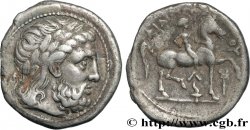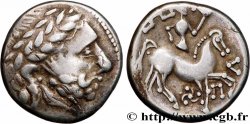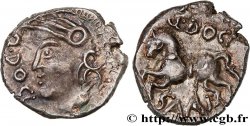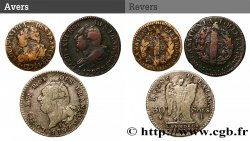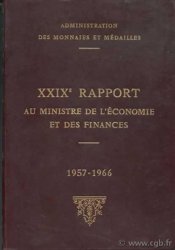Live auction - bgr_498621 - DANUBIAN CELTS - TETRADRACHMS IMITATIONS OF PHILIP II AND HIS SUCCESSORS Tétradrachme au cavalier, imitation de Philippe II
得先注册又得到批准才可以报价。为了报价注册. 客户应该得到公司允许,那种过程需要 48 个小时。别等出售结束那一天才登记。您报价的话等于您赞成买那物品,而且按« 保价 » 证明您接受 cgb.fr 因特网拍卖使用法.
报价时只可以出全数值欧元总额。物品描述也说明销售结束时间,结束后出价都不会生效。 报价命令转达有时变动,等到最后秒钟增加否决的可能会。想多了解的话请注意 因特网拍卖常问
最高出价方将支付18%的不含税的拍卖费用
最高出价方将支付18%的不含税的拍卖费用
| 估算 : | 750 € |
| 价格 : | 450 € |
| 最高出价 : | 450 € |
| 拍卖结束日期 : | 11 September 2018 14:05:51 |
| 竞拍人 : | 1 竞拍人 |
种类 Tétradrachme au cavalier, imitation de Philippe II
日期: (IIe-Ier siècles avant J.-C.)
材质 silver
直径 26,5 mm
模子方针 12 h.
重量 13,08 g.
稀少度 R2
关于品相的说明
Exemplaire sur un flan large bien centré des deux côtés. Belle tête particulière, légèrement stylisée de Zeus. Frappe un peu molle et brouillée au revers. Patine superficielle. A été nettoyé anciennement
出版目录中的项代码 :
正面
正面的文字 ANÉPIGRAPHE.
正面的说明书 Tête laurée de Zeus à droite ; grènetis.
背面
背面的说明书 Cavalier au pas à droite, tenant une palme de la main droite ; le cheval lève l'antérieur à droite, encadrée d’une lettre, d’une torche de course et d’un dauphin ; au-dessus du cavalier, la légende.
背面铭文 FILIPP-.-U/ L
背面的翻译 (de Philippe).
评论
Imitation de l’atelier d’Amphipolis avec le lambda et la torche de course sous le cheval au revers. Poids léger. Si le statère d'or de Philippe II de Macédoine a servi de prototype à de nombreuses imitations gauloises, le tétradrachme n'a pas été imité en Gaule, mais reste principal sujet d'inspiration des monnaies pour les Celtes du Danube (LT. 9697-9767, 9768-9832, 9618-9630, 9870-9886). Les premières imitations furent frappées dans le premier quart du IIIe siècle avant J.-C. La fabrication des copies serviles, puis des imitations, enfin des frappes celtiques continuèrent pendant plus de deux siècles.
Le revers est particulièrement intéressant, avec des motifs assez inhabituels ; le dauphin devant le cheval est particulièrement bien visible, alors qu'il est difficile de déterminer la nature du motif partant de la ligne d'exergue.
Cet exemplaire correspond au n° 961 ou 973 (même photo) du musée de Vienne.
Imitation from the Amphipolis mint with the lambda and the racing torch under the horse on the reverse. Light weight. While the gold stater of Philip II of Macedon served as a prototype for many Gallic imitations, the tetradrachm was not imitated in Gaul, but remains the main source of inspiration for coins for the Danube Celts (LT. 9697-9767, 9768-9832, 9618-9630, 9870-9886). The first imitations were struck in the first quarter of the 3rd century BC. The manufacture of servile copies, then imitations, and finally Celtic strikes continued for more than two centuries. The reverse is particularly interesting, with rather unusual motifs; the dolphin in front of the horse is particularly visible, while it is difficult to determine the nature of the motif starting from the exergue line. This example corresponds to no. 961 or 973 (same photo) from the Vienna museum
Le revers est particulièrement intéressant, avec des motifs assez inhabituels ; le dauphin devant le cheval est particulièrement bien visible, alors qu'il est difficile de déterminer la nature du motif partant de la ligne d'exergue.
Cet exemplaire correspond au n° 961 ou 973 (même photo) du musée de Vienne.
Imitation from the Amphipolis mint with the lambda and the racing torch under the horse on the reverse. Light weight. While the gold stater of Philip II of Macedon served as a prototype for many Gallic imitations, the tetradrachm was not imitated in Gaul, but remains the main source of inspiration for coins for the Danube Celts (LT. 9697-9767, 9768-9832, 9618-9630, 9870-9886). The first imitations were struck in the first quarter of the 3rd century BC. The manufacture of servile copies, then imitations, and finally Celtic strikes continued for more than two centuries. The reverse is particularly interesting, with rather unusual motifs; the dolphin in front of the horse is particularly visible, while it is difficult to determine the nature of the motif starting from the exergue line. This example corresponds to no. 961 or 973 (same photo) from the Vienna museum







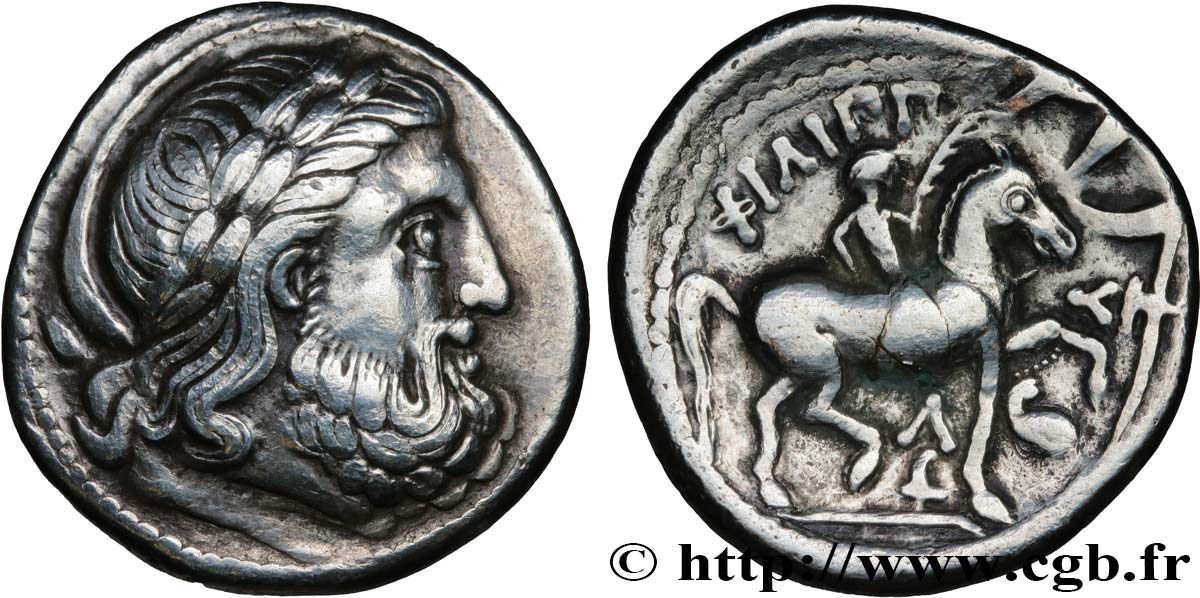
 对产品描述纠错
对产品描述纠错 打印
打印 分享我的选择
分享我的选择 提问
提问 Consign / sell
Consign / sell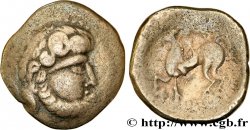
 产品介绍
产品介绍
